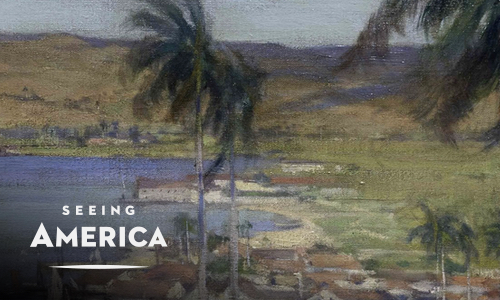From the factory to the home — examining where Americans spend their time
Browse content
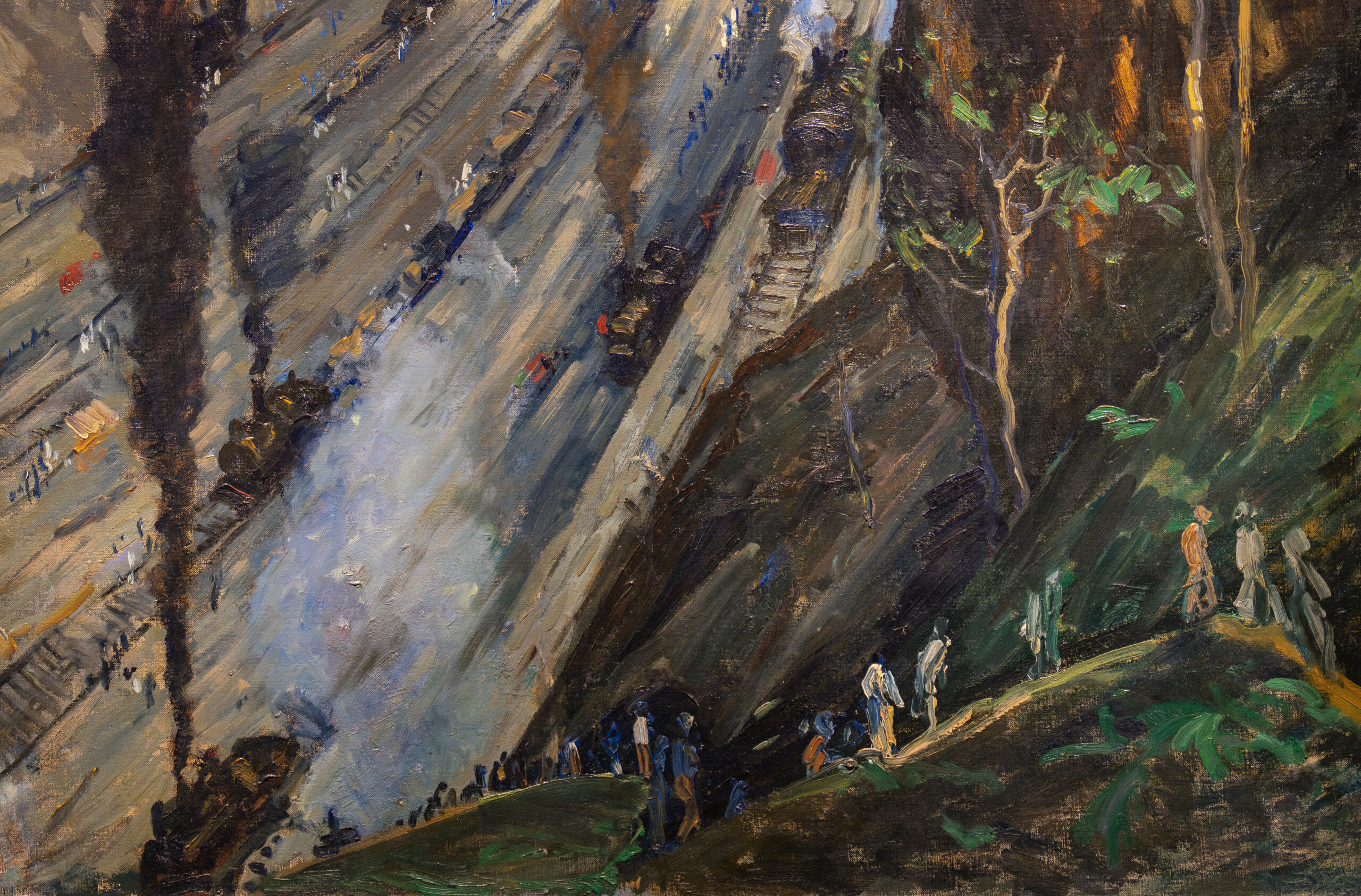
Jonas Lie, The Conquerors (Culebra Cut, Panama Canal)
Lie portrays man’s dominance over nature in his painting of the construction of the Panama Canal.
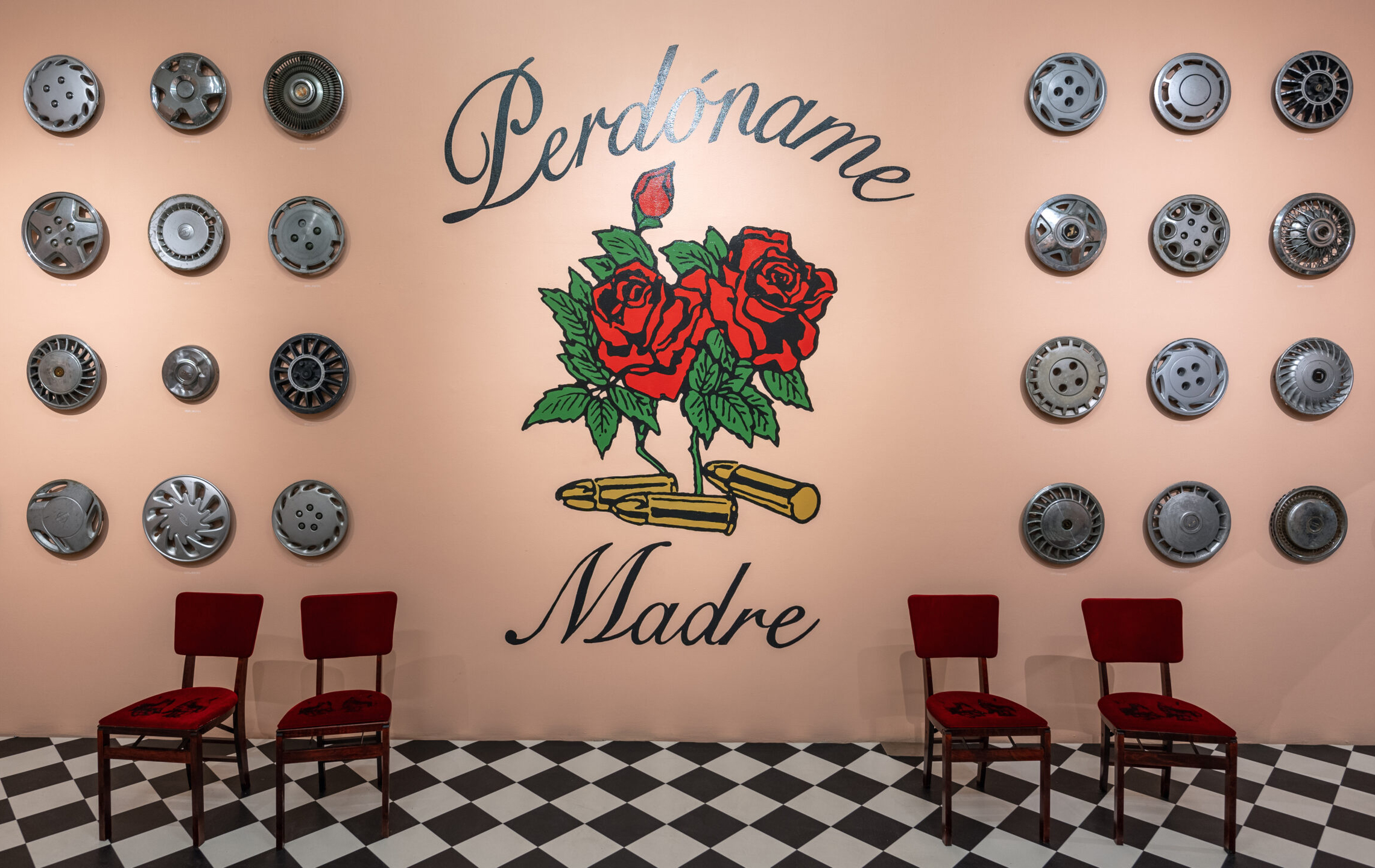
Pepón Osorio, En la barbería no se llora (No Crying Allowed in the Barbershop)
Osorio’s art explores the experience of being Puerto Rican in New York City.
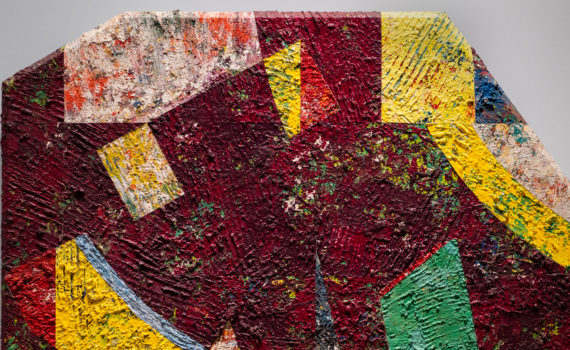
Sam Gilliam, Purpled (Chasers Series)
Sam Gilliam trespasses the distinction between painting and sculpture
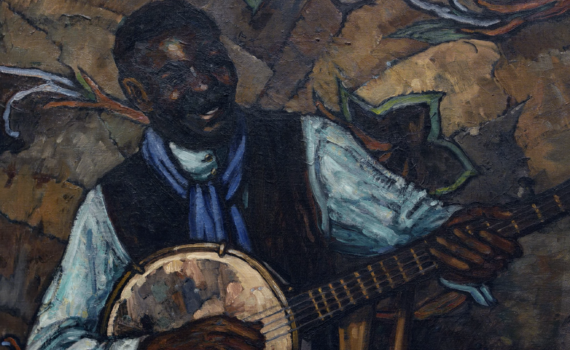
Hale Woodruff, The Banjo Player
Woodruff reimagines racist tropes of Black banjo players with a figure who is confident and joyful
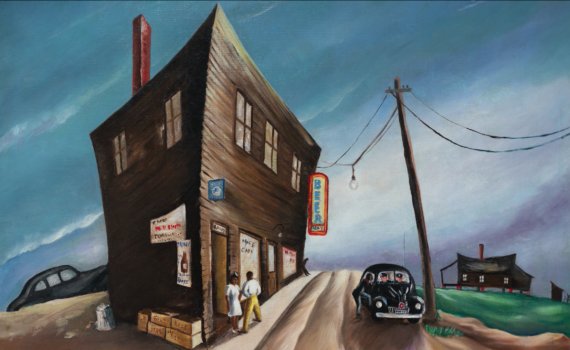
A Memphis juke joint
This swaying juke joint belies its purpose as the central meeting place enlivened by music and dance in many African American communities, but its jubilance is tempered by the painting's ominous atmosphere

Diego Rivera, Man Controller of the Universe
What will technology bring us? A more egalitarian society, a world where everyone can be educated? Or will it bring greater inequality? We still debate these issues...
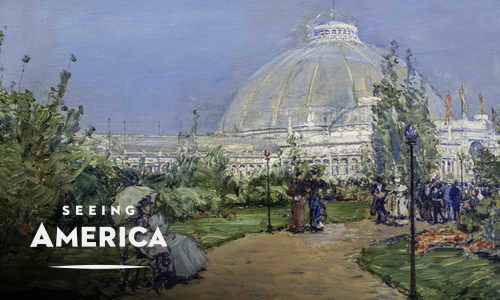
The 1893 World’s Columbian Exposition
The critics at the 1893 World's Fair in Chicago noted: "American art has made something of itself."
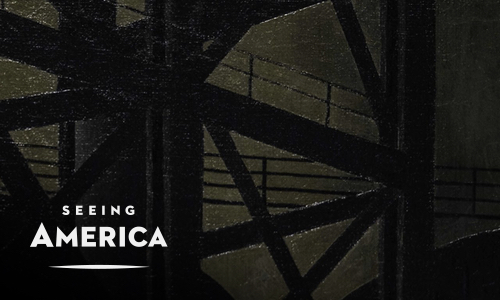
Elsie Driggs, Blast Furnaces
The awesome steel mills of Pittsburgh in the 1920s made an impression on the young Elsie Driggs.
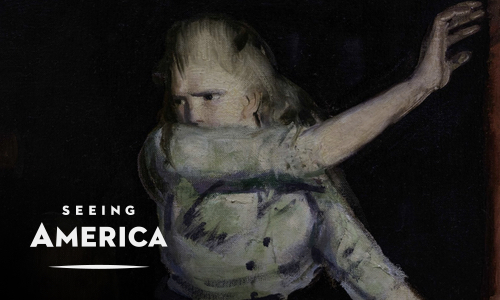
Beyond New York, Bellows & World War I
Beyond the street of New York, Bellows grapples with the horrors of the First World War
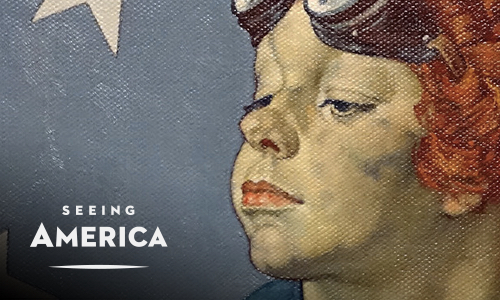
Teaching guide
Norman Rockwell, Rosie the Riveter
Rockwell's painting of Rosie the Riveter captured the power felt by the unprecedented number of women in the workforce during World War II. But how accurately did it depict the experiences of the diverse women who contributed to the war effort?
APUSH: KC-7.3.III.C.i
TEKS: 113.41.(17)(A)

Norman Rockwell, Rosie the Riveter
Representing women who entered the workforce during WWII, Rosie is strong, determined, and eating a ham sandwich.

Explore the diverse history of the United States through its art. Seeing America is funded by the Terra Foundation for American Art and the Alice L. Walton Foundation.

